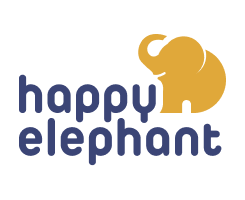These are typical concepts that Juniors class children explore in school, but should not be required to master before entering Kindergarten. Children learn these concepts at their own pace. What is learned in Pre-K is considered a "bonus". Children are taught with hands-on materials, songs, and games. They are assessed by observation and work samples.
Math
Literacy
Science
Creative Arts
Social Skills
Math
- Matching: objects, symbols, shapes, patterns, etc.
- Same and Different
- Sorting by various attributes: color, shape, size
- Patterns: AB, AABB, ABC, and possibly AAB, ABB
- Identify numerals 1−10 or more
- Counting objects to 10 or more
- One-to-one correspondence of objects when counting
- Sizes: small, medium, large (3 — 5 sizes)
- Shapes: square, rectangle, circle, triangle, oval, hexagon, rhombus (diamond)
- More, Less, Same
- Time: Day and Night, Sand Timer
- Weight: Example, what weighs more or less in a balance scale
- Measuring with non-standard units
Literacy
- Exposure to alphabet: letter names and sounds
- Recognize, spell, write first name
- Hold a pencil, marker, crayon correctly
- Retell familiar stories
- Draw pictures and dictate sentences about stories and experiences
- Answer questions about stories
- Repeat simple nursery rhymes and fingerplays
- Phonological Awareness: rhyming, syllables, alliteration
- Concepts of print: left to right direction, holding a book right-side-up
- Build new vocabulary
- Build listening skills
- Strengthen visual discrimination
- Sequencing
- Develop fine motor skills: play dough, scissors, writing utensils, Legos, etc.
Science
- Explore science tools: magnets, prisms, magnifying glasses, etc.
- Experience the world through nature walks, gardening, and other explorations
- Observe insect life
- Observe plant growth
- Observe weather and plant life during each season
- Measure and mix ingredients in cooking activities
- Identify basic colours and explore colour mixing
- Make observational drawings and dictation
- Explore the world with the five senses
- Investigate animals, the homes they live in, the food they eat
Creative Arts
- Explore a variety of art processes: painting, drawing, sculpture, weaving, collage, etc.
- Use a variety of art materials: crayons, tempera paint, watercolor paint, colored pencils, markers, oil pastels, art chalk, clay
- Experiment with mixing paint colours
- Sing traditional songs and songs that enhance the curriculum
- Participate in movement songs and dances
- Use scarves, rhythm sticks, and bean bags to practice rhythms
- Use a variety of children’s instruments
- Participate in dramatic play
- Dramatise familiar stories
- Act out the movements and sounds of animals
Social Skills
- Practice problem-solving skills in social situations
- Work in groups or with a partner on a variety of projects
- Share classroom materials with the group
- Practice using manners: please, thank you, excuse me, table manners
- Communicate his/her needs
- Take care of his/her own basic needs: clean up, roll up nap pad, fasten clothing, use tissue as needed, etc.
- State personal information: first and last name, age, school name, city, country
- Explore types of work and workers
- Explore modes of transportation
- Participate in projects to help others in need



